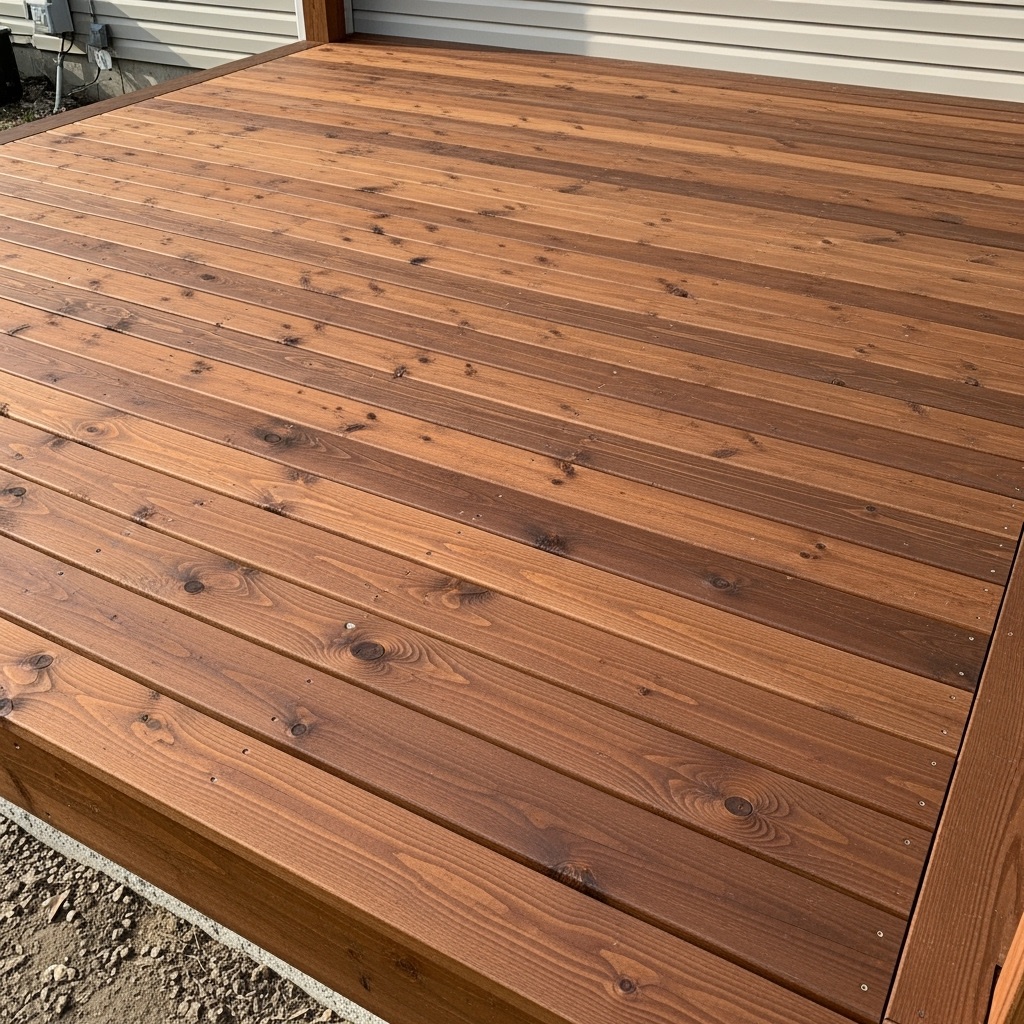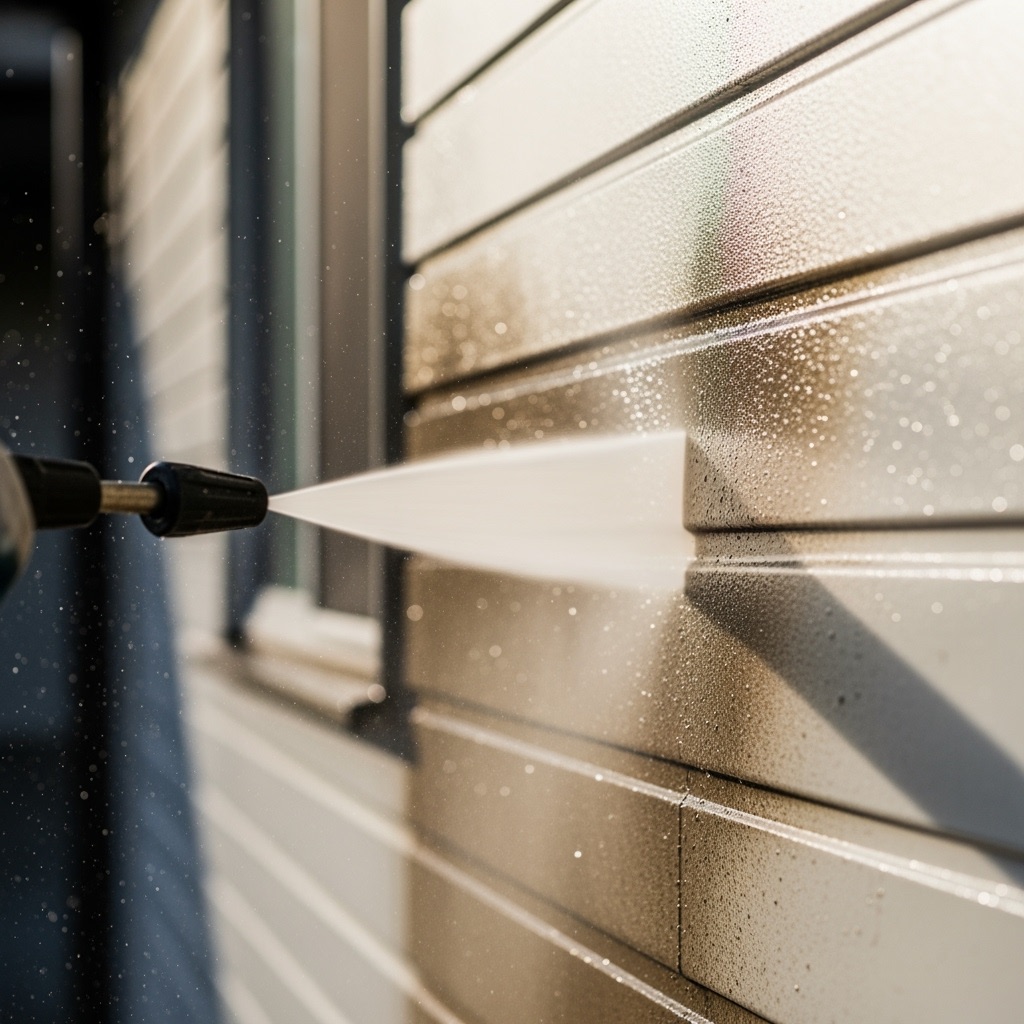Last updated on
In a nutshell, there are two main types of ice maker machines—commercial machines and countertop ice makers for the home.
Let’s look at all of the types of ice machines, including the commercial and home-use models. This will help you get your head around all the models available and choose the exact type you need for your use. Be it for your home or commercial purposes.
The types of ice makers are distinguished by their size, function, capacity to make ice, the time it takes to produce ice, and the type of ice they make.
We have included shopping links to illustrate with examples. These earn our site a commission but at no cost to you.
What's Inside
Self-Contained Ice Machines
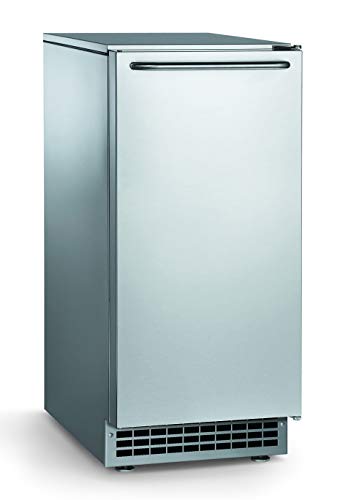
The machine houses the ice maker in a compact area that allows it to be stored in small spaces. The self-contained machine works well for places that use a lot of its space all at once, such as bars or coffee shops. These machines make an average of 75-500 pounds per day, filling up so quickly that they typically need to produce more than one batch.
Modular Ice Machines
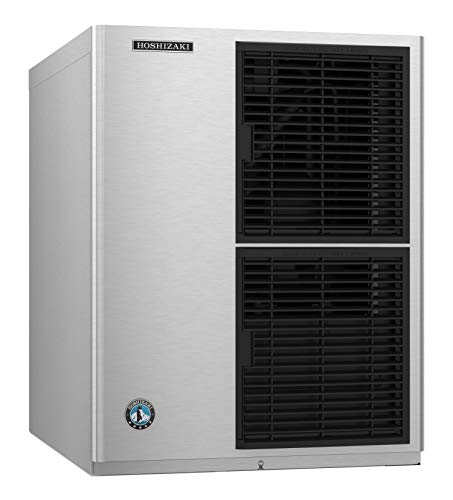
A modular ice machine is a good option for those looking to produce large amounts of ice. This machine typically sits on an adjacent unit, such as an ice bin, beverage dispenser, or tabletop holder. These are best for casual and fine-dining restaurants, hotels, movie theaters, etc. Typical ice production with this type can reach 150-1000 pounds per day. The modular style is better suited for commercial settings.
Ice Dispensers
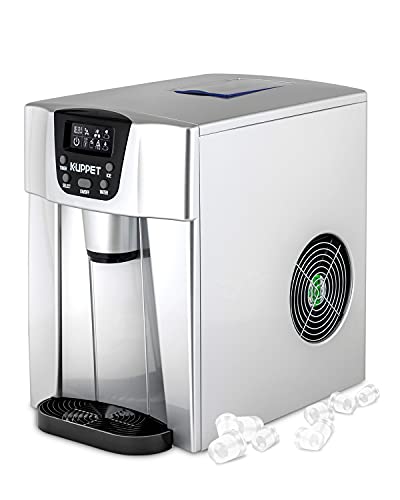
An ice dispenser is a machine that not only makes ice but dispenses it right from the unit. Since a dispenser is designed for frequent usage, it’s considered the option for peace of mind because iced chunks are usually stored in coolers. It is a sanitary choice for appropriate places such as canteens at work.
Countertop Ice Makers
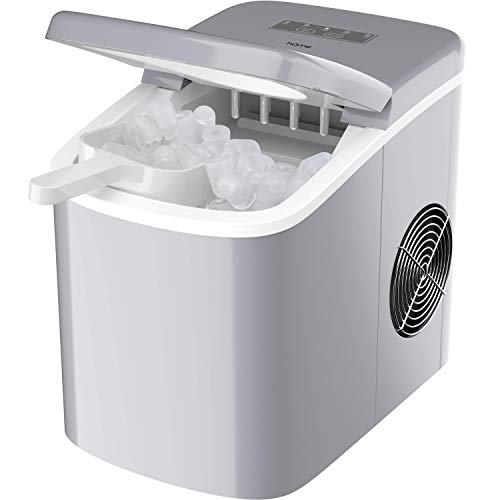
Check Out the Top 10 Best Countertop Ice Makers
It typically produces small chewable ice, and you can place it on top of tables, desks, and counters. Besides home, it’s best for hospitals, health care facilities, or offices due to its modest size. An average of 50 – 400 pounds of ice is produced a day, with a usual batch being enough for a couple of drinks. A countertop ice maker’s job is to produce refrigerated water that makes single bite-sized pieces are easy to chew and swallow.
Portable Ice Makers
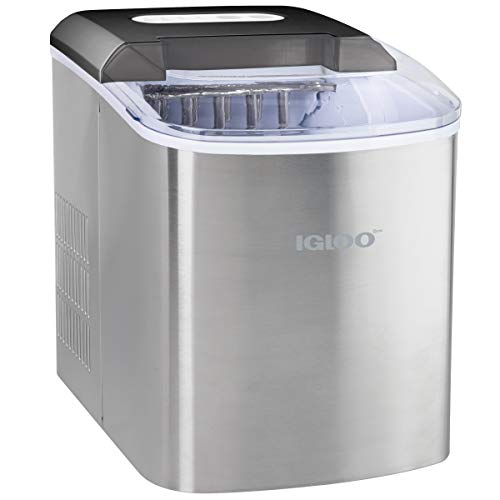
A portable ice maker is a machine that can make a couple of cups of ice quickly and easily. The best way to describe them would be as an appliance or device that makes the process of producing small, constantly replenished cubes as easy and quick as possible. It consists of a water reservoir, ice maker, and ice basket. Usually, the unused ice melts back into the reservoir.
Nugget Ice Makers
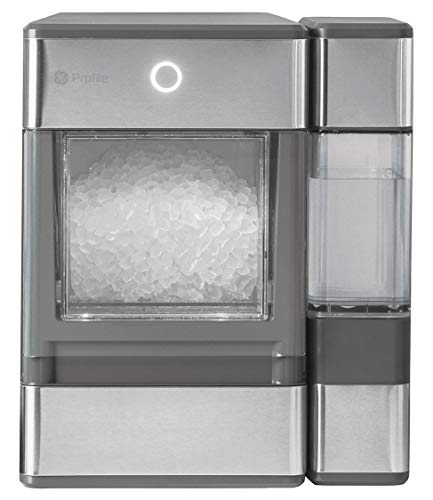
Check Out the Top 10 Best Sonic Ice Makers
A nugget ice maker freezes a slab of ice and then spins it into round cubes known as nugget ice (or sonic ice). How much an ice maker produces can vary from day to day and largely depends on the temperature and humidity levels inside of the machine’s freezer unit. The average amount for a typical machine is 500 pounds per 24 hours. Besides home, nugget makers are best used in bars or restaurants where crushed or cubed ice for a single drink.
Clear Ice Makers
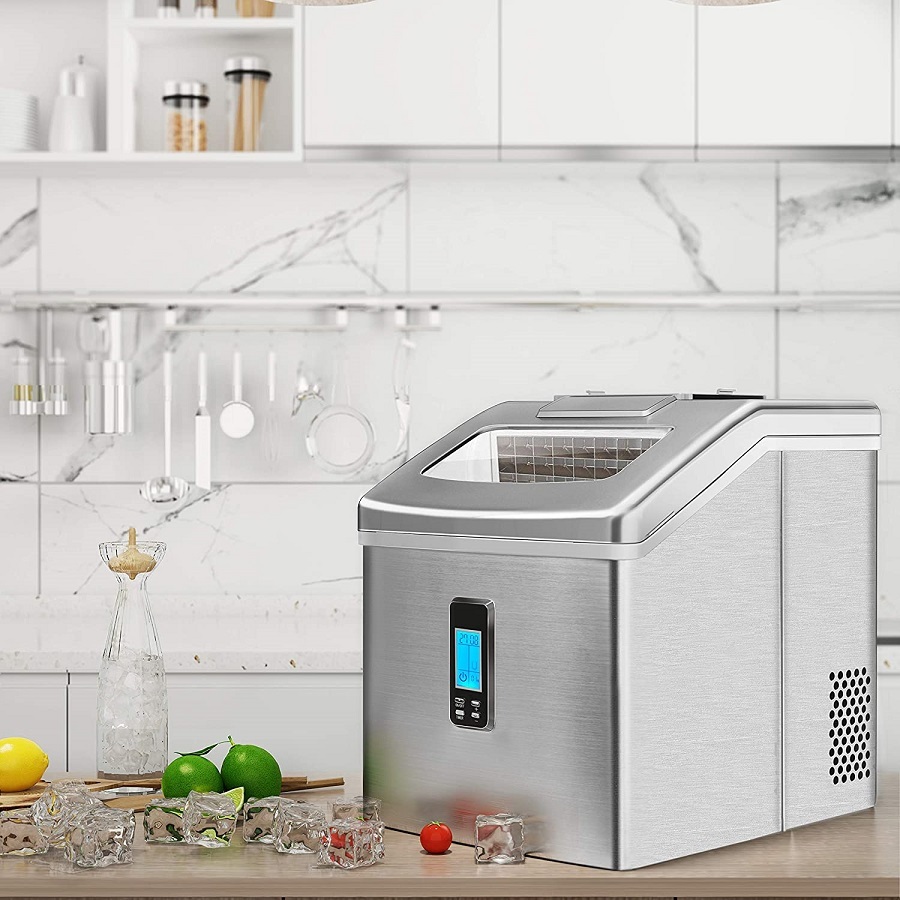
Check Out the Top 10 Best Clear Ice Makers
Clear ice machines make ice tubes by removing impurities from freezing ice and replacing them with fresh water through low air pressure. The clear ice tubes are then cut into usable clear ice cubes.
Shaved Ice Makers
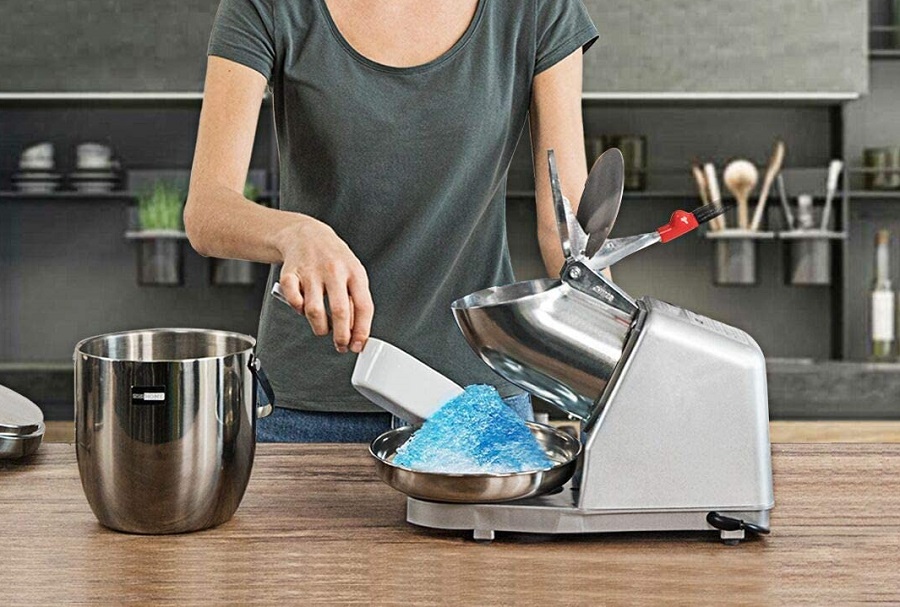
Check Out the Top 10 Best Shaved Ice Makers
They go by several different names – snow cone makers, shave ice machines, extra-fine slushie machines, but more often than not, people call them shaved ice makers. These are basically machines that shave ice mechanically.
Crushed Ice Makers
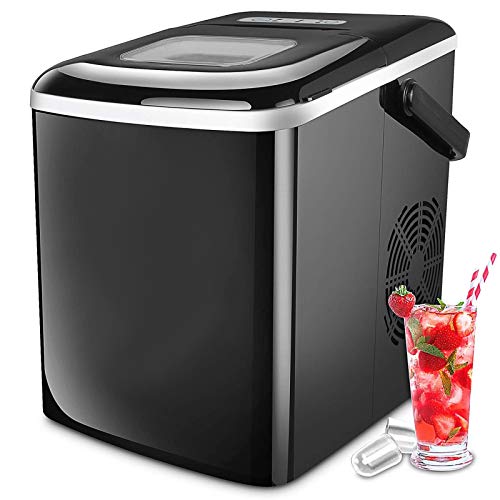
Many ice machines can either make cubes or crushed ice. There is also a difference based on the size of the crush portion that will continue to change with smaller and smaller pieces. Crushed ice can be good for making iced beverages and frozen cocktails since there is more surface area in an equal piece than in a cube. Crushed ice dispensers maintain larger chunks (1-2″) which are best for chilling drinks like cocktails where larger chunks help maintain the temperature.
Ice Cream Makers
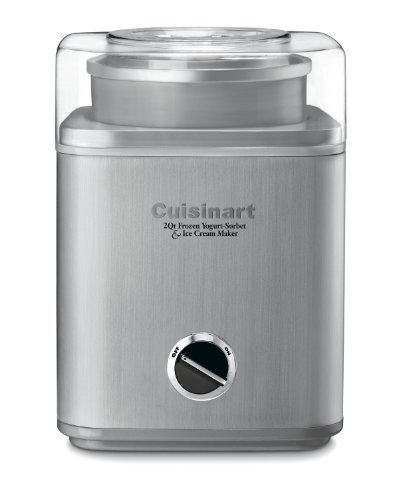
An ice cream maker can be considered a type of ice maker (it has ice). They work similarly but freezing ice cream mixture instead of water to produce the ready-to-consume ice cream.
Ice Machine Condensing Units
Condensing units are what turn water into ice, and they come in three different types. Depending on your needs, you can pick which type is best for you.
Air-cooled condensers commonly seen in commercial ice machines are cooled by moving air from a fan.
Water-cooled condensers are good for restaurants that have space for the machine. They do not work well if you cannot move them around a lot due to lack of room or airflow.
Remote-cooled ice machines eliminate heat and noise by moving the condenser to another room. They are quieter, but they need extra maintenance compared to ones that are air or water-cooled. Remote-cooled units also have many more moving parts than air-cooled units, so you must take care to keep them all working correctly without contamination from oil, moisture, and other substances.
Ice Bin
An ice bin is a container that is typically circular but can be square or oval-shaped. It’s used to store all the ice created from an ice machine. Some storage bins have sensors that automatically shut off the ice machine once they are full, avoiding overflow.
You should ask yourself what type of ice and how much capacity your establishment uses in a day, and then add 20% to the amount because it gets used during peak hours. Remember: if you’re using 500 pounds of ice per day, choose a bin that can hold between 575-600 pounds.
You should consider if you go through hundreds of pounds of ice a day and purchase either a large capacity bin or a full-size dispensing unit. Also, you will need to know how many hours it takes for the machine to cycle through 200 pounds of ice, then you can further plan by purchasing a smaller bin that has about 100-200 pounds in case of overflow happens.
An ice storage bin should not be too big. If the bin is too big, it will cause ice to melt or stagnate if the ice isn’t used frequently. The bin needs to be regularly disinfected to prevent bacteria from spreading in the ice.
FAQ
The two main types of ice machines are commercial ice machines and countertop ice makers.
Countertop ice makers cost $100 to $500, while commercial ice machines cost $2,000 and more.
Ice melts in the ice maker if it doesn’t have internal cooling. You have to remove ice from such machines immediately. Meanwhile, ice makers with built-in refrigerators keep the ice frozen.

